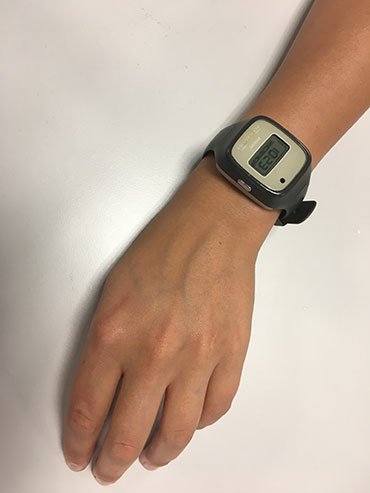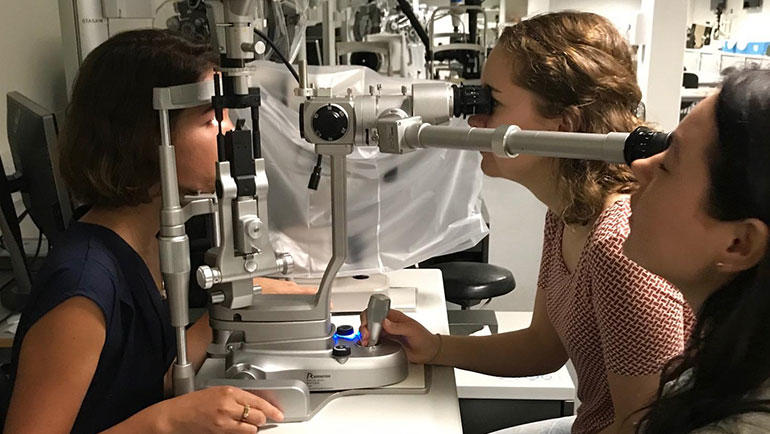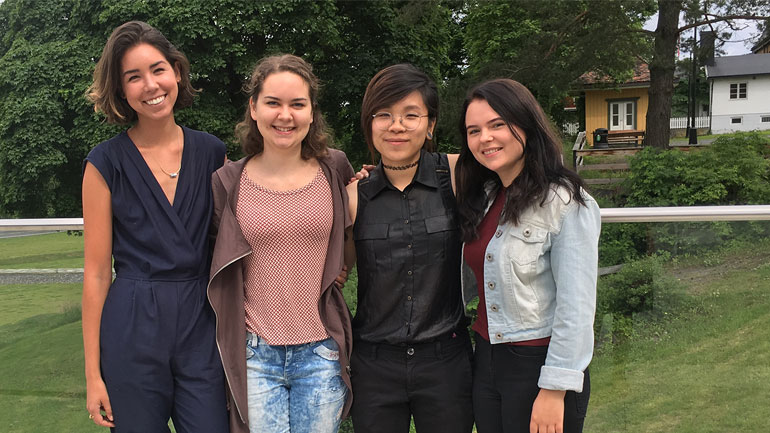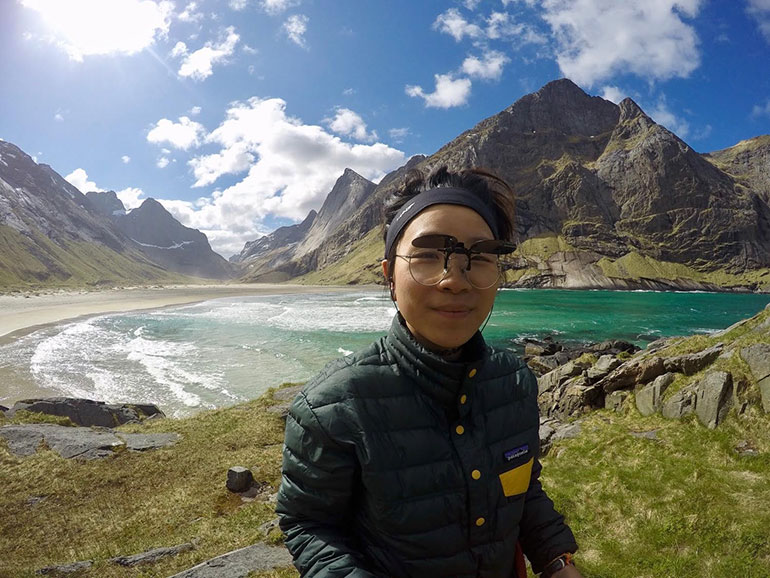Text and photo: Ann Sofie Kaalen
Dorothy Hsu and Elle Holmes from Berkeley and Sara Dolva and Maren Søberg from USN were the successful students selected to attend the MyOpIA Summer School. While the program is focused specifically on refractive errors and myopia, the real value for the students is in sharing experiences, learning scientific methods, and gaining broader insights to further their education and personal development.
Furthermore, their ability to work closely with world-class vision scientists in a small group has given the students an immense learning opportunity that will help them in their further development.
The research
The two-year pilot program is focusing on Myopia, commonly referred to as nearsightedness.
“Norway has a low prevalence of myopia, very few Norwegians are near sighted, whereas in Asia and US there is a high prevalence of myopia”, says Sara. “In this research, we are looking at among other things daylight, because Norway has different daylight than rest of the world”.
The students have so far collected data on 10 Norwegian students over a 2-week period.

“Other factors may be genetics and outdoor activity, so we are using special watches, that the study participants patients are wearing, to measure things like outdoor activity and near work. We will be comparing the behavior of American and Norwegian students, myops versus non-myops, to see if there are any difference in habits.
“It would be exciting if we found any correlation, but this is a long-term study. We don’t expect to find the solution for myopia”, Maren adds.
“This program helps us to learn what tools you have available, to collect data, learning a new coding language and trying to figure out statistics. It has been eye-opening I would say,” says Dorothy.
The students all have 2 years left of their degree, but will get a sneak peek into research within the optometry field during the summer school.
“I think that part of the purpose for this summer program is to encourage students to think critically and encourage students of optometry to be interested in research to further the field so we can learn the answers to these kinds of things and have the end goal be better treatment for individuals who have myopia,” says Elle.
Even though the students are working over the summer with less activity at the school, the students appreciate working in a smaller environment with fewer students enabling them to ask questions.
“It’s very interesting to see all the work that they do down in the labs. It’s also exciting to work with study participants,” said Maren.
Over the next few weeks the students will collect more data and begin analyzing the data using statistical tools.
Working with world class professors
The cross-cultural experience is a key component of this education, but the quality and dedication of the professors is what makes the program really interesting. Professor Rigmor Baraas and Professor Christine Wildsoet from Berkeley have developed the program.
The professor’s thoroughness on how they set up the program gives the students the ability to learn practical and clinical skills in all aspects of optometry and vision science. This includes being able to “shadow” optometrists in the clinic, “shadow” scientists collecting data using at high-resolution adaptive optics imaging technology, and even recruiting students to be study participants.
“We get to learn so much that we wouldn’t normally encounter until later in our studies, and we learn easily because we are only four students in the class so we get to try everything right away. Also, we get to learn more about the practical use of instruments because you have so much time to try them when you are in a small group,” said Sara.
“I am super grateful to get this opportunity. Its run by to amazing individuals who are well respected around the world in their field. The fact that they set this up for the four of us blows my mind!” said Dorothy.
“It’s really unique for first year students to get this sort of hands-on experience and working directly with well-respected researchers,” added Maren.
Cultural differences
The four students have spent the first two weeks of the eight-week summer program at campus Kongsberg, and Dorothy and Elle already have some new cultural perspectives.
Coming to Norway is a great opportunity for the American students to get some cultural perspective, to widen their field of knowledge, and see how things work in a different part of the world.
“Even though Kongsberg has a slower pace than Berkeley, you get to learn how to manage your time differently. It’s easier to self-learn, the program itself and all that Rigmor has taught us, it motives you to want to learn more,” said Dorothy.
“You can see that Norway is a very technology driven society. USN provide more advanced equipment than Berkeley”, says Elle.
On the flip side, the Norwegian students will be exposed to a broader community at Berkeley, as they have a number of optometry-based organizations and clubs on campus. One of the more interesting projects involves working with Google, conducting research with contact lenses and Google Glass. Berkeley is also working with Google on how optometrists can treat people with diabetes, as well as advancements in gaming and virtual reality, cancer treatment and macular regeneration.
There are 20 different schools within optometry in the US, whilst in Norway USN is the only University College that offers this education.



